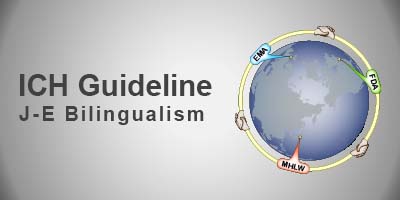薬審第442号
平成8年7月2日
ICH Harmonised Tripartite Guideline
Having reached Step 4 of the ICH Process at the ICH Steering Committee meeting on 27 October 1994, this guideline is recommended for adoption to the three regulatory parties to ICH
反復投与組織分布試験ガイダンス
PHARMACOKINETICS: GUIDANCE FOR REPEATED DOSE TISSUE DISTRIBUTION STUDIES
1. はじめに
化合物の吸収,分布,代謝ならびに排泄に関する総合的な知識は,薬理ならびに毒性試験の解釈にとって重要である。組織分布試験は,特に作用部位との関連において,当該化合物または代謝物あるいは両者の分布ならびに蓄積に関する情報を提供する上で基本的なものである。この情報は毒性ならびに薬理試験の計画,ならびにこれらの実験結果の解釈の上に有用であろう。
非臨床試験資料の一部として,単回投与組織分布試験が必要であることについては,EU,米国ならびに日本の間で一般的な合意が得られている。多くの場合これらの試験によって組織分布に関する十分な情報が得られる。
反復投与組織分布試験の必要性については統一的な考えはなかった。しかし,その結果が重要な情報を与えるような状況があり得る。
この文書は,反復投与組織分布試験を考慮すべき状況と,そのような試験の実施についての指針を提供するものである。
1. Introduction
A comprehensive knowledge of the absorption, distribution, metabolism and elimination of a compound is important for the interpretation of pharmacology and toxicology studies. Tissue distribution studies are essential in providing information on distribution and accumulation of the compound and/or metabolites, especially in relation to potential sites of action; this information may be useful for designing toxicology and pharmacology studies and for interpreting the results of these experiments.
In the EC, US and Japan, there has been a general agreement on the need to conduct single dose tissue distribution studies as part of the non-clinical programme. These studies often provide sufficient information about tissue distribution.
There has been no consistent requirement for repeated dose tissue distribution studies. However, there may be circumstances when assessments after repeated dosing may yield important information.
This paper provides guidance on circumstances when repeated dose tissue distribution studies should be considered and on the conduct of such studies.
2. 反復投与組織分布試験を考慮すべき状況
① 単回投与分布試験により,臓器あるいは組織中の被験化合物(または代謝物,或いは両者)の見かけの半減期が,血漿中濃度の消失相の見かけの半減期より明らかに長く,且つ毒性試験の投与間隔の2倍より大きいことが示唆された場合には,反復投与試験の実施が適当と考えられる。
② 反復投与薬物動態試験あるいはトキシコキネティクス試験において,体循環中の化合物/代謝物の定常状態レベルが単回投与の動態試験から予測された値よりも著しく高い場合には反復投与組織分布試験を考慮すべきだろう。
③ 被験物質の安全性評価に重要と思われるような病理・形態的変化が観察され,それらが短期の毒性試験,単回投与組織分布試験,及び薬理試験からは予測されない場合には,これらの結果の解釈に反復投与組織分布試験が助けになるであろう。この場合には病変の発現部位である臓器あるいは組織が試験の主対象となるべきであろう。
④ 標的指向型薬剤を開発する場合には,反復投与組織分布試験の実施が適当と考えられる。
2. Circumstances Under Which Repeated Dose Tissue Distribution Studies Should be Considered
(1) When single dose tissue distribution studies suggest that the apparent half-life of the test compound (and/or metabolites) in organs or tissues significantly exceeds the apparent half life of the elimination phase in plasma and is also more than twice the dosing interval in the toxicity studies, repeated dose tissue distribution studies may be appropriate.
(2) When steady-state levels of a compound/metabolite in the circulation, determined in repeated dose pharmacokinetic or toxicokinetic studies, are markedly higher than those predicted from single dose kinetic studies, then repeated dose tissue distribution studies should be considered.
(3) When histopathological changes, critical for the safety evaluation of the test substances, are observed that would not be predicted from short term toxicity studies, single dose tissue distribution studies and pharmacological studies, repeated dose tissue distribution studies may aid in the interpretation of these findings. Those organs or tissues which were the site of the lesions should be the focus of such studies.
(4) When the pharmaceutical is being developed for site-specific targeted delivery, repeated dose tissue distribution studies may be appropriate.
3. 反復投与組織分布試験の計画と実施
これらの試験の目的は,放射性同位元素標識化合物あるいは十分な感度と特異性を有する他の方法を用いることにより達成されるであろう。
投与量及び動物種は,反復投与組織分布試験を行うことになった理由に基づいて選択されなければならない。
反復投与組織分布試験の投与期間は,事前に得られた薬物動態試験ならびにトキシコキネティクス試験から得られる情報に基づいて設定されるべきである。通常は1週間の投与が最低の投与期間と考えられる。当該化合物または代謝物,あるいは両者の血液もしくは血漿中濃度が定常状態に達しない場合には,より長期間投与すべきである。なお,通常は3週間以上投与する必要はないと考えられる。
高濃度の蓄積が起きた場合,あるいは臓器毒性の機作を解明するのに役立つと考えられる時には,臓器や組織中の未変化体または代謝物あるいは両者の測定を考慮すべきである。
3. Design and Conduct of Repeated Dose Tissue Distribution Studies
The objectives of these studies may be achieved using radiolabelled compounds or alternative methods of sufficient sensitivity and specificity.
Dose level(s) and species should be chosen to address the problem that led to the consideration of the repeated dose tissue distribution study.
Information from previous pharmacokinetic and toxicokinetic studies should be used in selecting the duration of dosing in repeated dose tissue distribution studies. One week of dosing is normally considered to be a minimum period. A longer duration should be selected when the blood/plasma concentration of the compound and/or its metabolites does not reach steady state. It is normally considered unnecessary to dose for longer than three weeks.
Consideration should be given to measuring unchanged compound and/or metabolites in organs and tissues in which extensive accumulation occurs or if it is believed that such data may clarify mechanisms of organ toxicity.
4. まとめ
組織分布試験は前臨床の薬物動態試験を構成する重要な要素である。殆どの化合物については,単回投与組織分布試験が十分な感度と特異性を持って行われれば,組織分布と蓄積の可能性についての十分な評価が可能であろう。従って,反復投与組織分布試験はすべての化合物に対して一律に要求されるべきではなく,他の試験からは適切なデータが得られない場合にのみ実施されるべきである。単回投与組織分布試験,毒性試験あるいはトキシコキネティクス試験から得られるデータに基づく,ある一定の状況下では反復投与試験を行うことが適切であろう。この試験は明らかに長い半減期をもつ化合物,消失の不完全な化合物,あるいは予期せぬ臓器毒性が現れた化合物に対して行うことが最も適切であろう。反復投与組織分布試験のデザインと実施時期は状況に応じて決定すべきである。
4. Summary
Tissue distribution studies are an important component in the non-clinical kinetics programme. For most compounds, it is expected that single dose tissue distribution studies with sufficient sensitivity and specificity will provide an adequate assessment of tissue distribution and the potential for accumulation. Thus, repeated dose tissue distribution studies should not be required uniformly for all compounds and should only be conducted when appropriate data cannot be derived from other sources. Repeated dose studies may be appropriate under certain circumstances based on the data from single dose tissue distribution studies, toxicity and toxicokinetic studies. The studies may be most appropriate for compounds which have an apparently long half life, incomplete elimination or unanticipated organ toxicity. The design and timing of repeated dose tissue distribution studies should be determined on a case-by-case basis.










